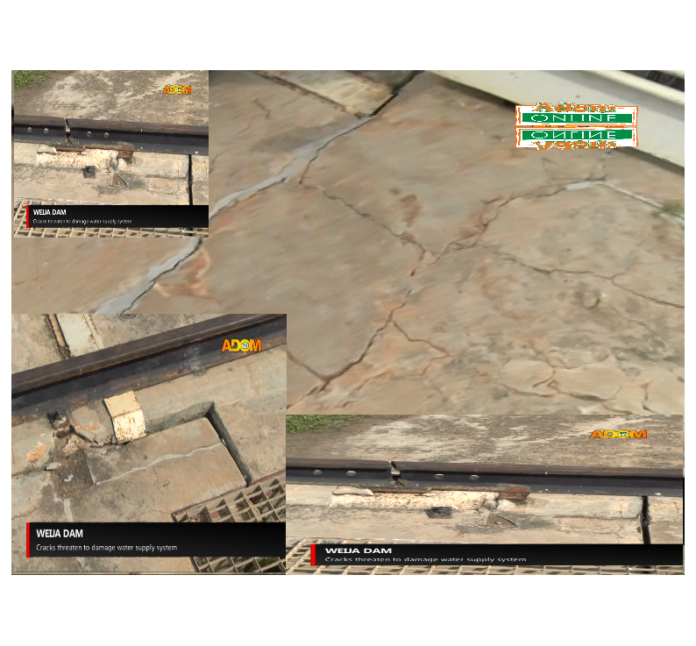Weija Dam, the place where water is treated and supplied from to about a third of Accra’s population, looks like breaking down soon. Structural cracks point to danger ahead.
The Weija Dam was built by the Kutu Acheampong regime in 1978 for water treatment and supply to about 80% of households in Accra at the time. It has, since, remained a major national asset, even if it now supplies only a third of Accra’s population. However, today, portions of the structures have developed deep cracks.
ALSO READ: Samreboi Chiefs to hit the street over bad roads
The five concrete water channels of the dam have visible cracks which are quite frightening. Adom Kaseɛ junketing reporter Prince Owusu Asiedu who reported the story adds that more cracks can be found beneath the channels.
Additional damage is found in one of the gates of the five concrete water channels of the dam that water spills through; the gate is faulty and malfunctioning.
According to some of the neighbourhood residents, they fear that, if the Weija Dam is left to deteriorate further, the facility structure will soon collapse, swamping hundreds of homes and carrying away incalculable lives and property.
The inhabitants, therefore, called on the government to renovate the structure, or, construct new water channels.
ALSO READ: Photos: Printing press owner shot multiple times in wife’s presence
In reaction, Ghana Water Company Limited (GWCL) Public Relations Officer Stanley Martey says the government has engaged a Norway-based firm to assess the integrity of all water dams in Ghana to identify the ones that need urgent rehabilitation. Dams audited included Kpong and Akosombo Dam.
According to Mr Martey, the assessment by the consultant was that the state of the Weija Dam is manageable, but, the structure needs rehabilitation. And, for that due restoration, the government is yet to find the money.
In what seems running contrary to the sages’ adage that ‘a bird in hand is worth more than a thousand in the bush’ the Water Company official says the government is looking at building additional, albeit, smaller dams to store more water all-year-round.
Meanwhile, as if to amplify the proverbial Ghana poor maintenance culture, some structures built close to the dam for GWCL plant treatment have been abandoned to rot.
Mr Martey told Adom News that the government has plans to rehabilitate them; but, not for equipment treatment. Guess what? They will now be used as a museum.
Even if all those living too close to the Weija Dam were evacuated before any eventuality; even if floods swept no single life away; it is hard to imagine the damage cost – if the Weija Dam were to break down and a third of Accra’s population, two million people, were to be without water.
Source: Adomonline.com | Adom News | Prince Owusu Asiedu

